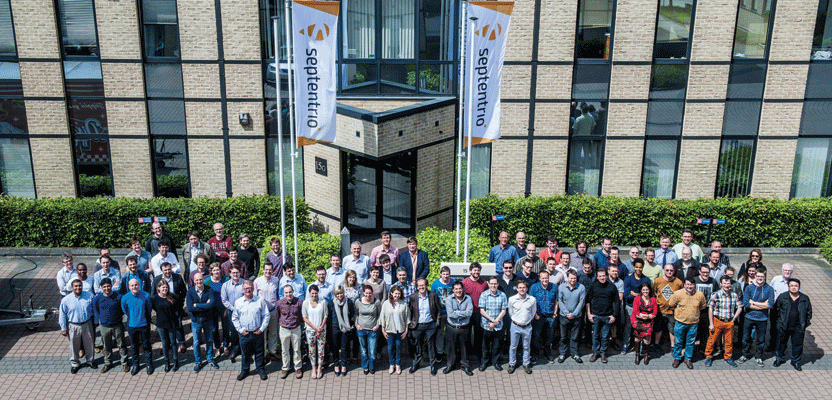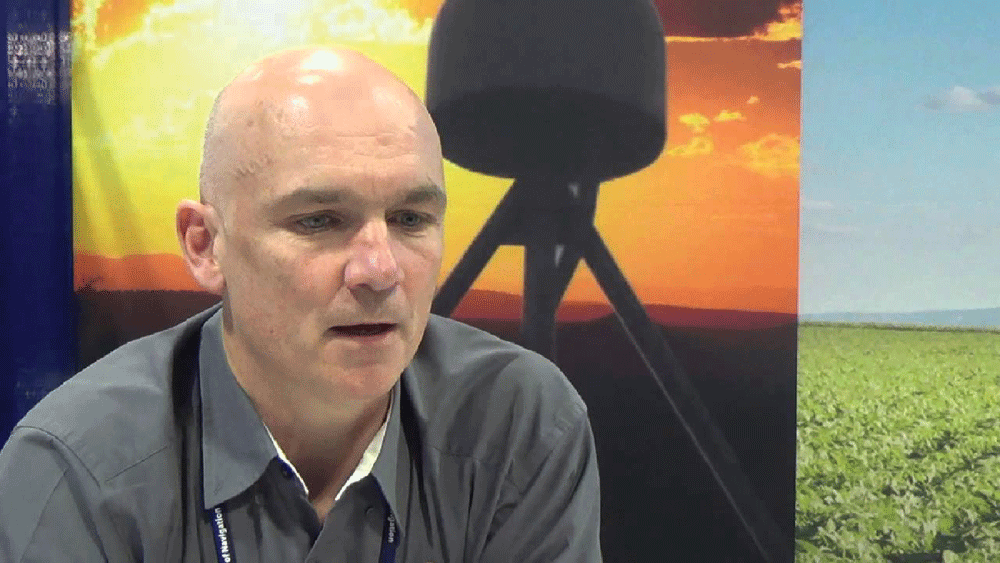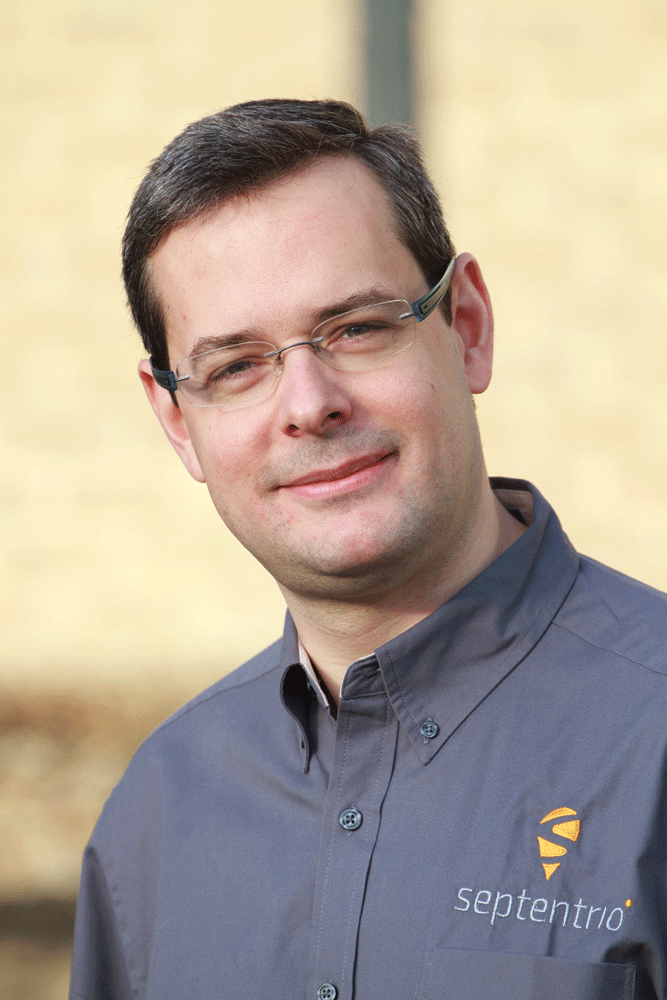A Profile of Septentrio
Editor’s note: The name Septentrio may not be familiar to you, but after their formal acquisition of Altus (with which Septentrio has collaborated for a decade) you may be hearing more about this internationally recognized, high-precision GNSS developer. A leader in GNSS research and development since 1999, Septentrio has a strong presence in science, timing, machine control, and interference detection and mitigation and has developed timing components for the Galileo ground segment, has led a testing program for Galileo, produces OEM boards (these are at the heart of the Altus rovers), and more. Information about them rounds out this location technology issue.Septentrio makes high-precision GNSS receivers for commercial and scientific applications. Its origins are in European space research, to which it is still tightly connected. I discussed the company’s history and strengths with Jan Van Hees, its director of business development, and Bruno Bougard, its R&D director.
Origins
Septentrio was founded in the 1990s at IMEC, a microelectronics basic research company, as part of work for the European Space Agency that led a group to develop high-precision GPS and Glonass technology. To commercialize this technology, in 2000 IMEC spun off Septentrio.
Most of its staff of about 100 people, which includes about 20 nationalities, is based at the company’s headquarters in Belgium, with additional offices in California and Hong Kong. About half the staff is in engineering, and almost everybody in engineering has at least a college degree; many have PhDs. The company subcontracts the manufacturing of the boards and does final assembly, configuration, tests, and maintenance in house.
Boards and Algorithms
A key differentiator of Septentrio’s RTK and GNSS modules is their low power consumption. Bougard points out the example of the AsteRx-m, which is a small form factor board with a power consumption of 500mW, while the competition is well above 1W. This translates directly into longer battery life, which is very important for survey, GIS, robotics, UAS, and scientific applications.
For example, Septentrio recently launched the PolaRx5 receiver that it developed in cooperation with UNAVCO. “We won that tender notably on the fact that we had a receiver with a consumption of less than 2W for a fully featured system,” says Bougard.
Another differentiator is all-signal capabilities. “When we started Septentrio,” Bougard recalls, “we already had a multi-constellation technology. Our first ASIC was already a GPS-Glonass receiver.” Since then, the company has been part of the Galileo program for almost 13 years, in the last ten years developing the receivers that are used to test the satellites and equip the tracking stations. This has given the company significant experience handling all of the Galileo signals, including the PRS signals.
Septentrio’s PolaRx4TR timing receiver is at the heart of the Galileo timing system, for example to ensure the alignment of Galileo and GPS time. The company was also the first to track the Beidou signal in real time, after Stanford University students cracked its code. “All of our new products are multi-constellation, all-signals-in-view receivers,” says Bougard. “They are capable of using all the available signals to compute the most accurate and reliable position, with or without augmentation.”
Septentrio’s boards are optimized at the hardware and software level to operate in the most difficult environments. The first element of this is their resilience to multipath, which is a key for precision GNSS.
“One of Septentrio’s assets in 1999 was a patented a posteriori multipath estimation (APME) technology, which is the only multipath mitigation method that is bias-free, so it doesn’t change the observations themselves. This bias-free character is fundamental when you deploy the receiver for a reference network, for instance to compute corrections for Precise Point Positioning. The fact that we are not altering the observable is also highly valued by scientists who really want to see the observables as they are, without the post-processing,” says Bougard.
Septentrio’s receivers also distinguish themselves in their ability to treat interference. The company learned this in its long experience in offshore construction and dredging applications. “Our receivers there were mounted in quite interference-rich environments, and we really learned how to mitigate interference,” Bougard recalls. Septentrio’s chipsets have specific capabilities deep in the hardware to mitigate both out-of-band interference, by means of very strong filtering in its front-end chips, and in-band interference, by means of a very high dynamic range and specific digital signal processing.
Additionally, Septentrio’s receivers have a strong monitoring capability. The AsteRx4 and PolaRx5 have a built-in spectrum analyzer, which enables users to monitor for interference via a web interface. The company is also developing cognitive methods to detect and suppress interference that do not require user action. “We are doing that because the user is less and less GNSS-savvy,” Bougard explains. “They just want a positioning system that works.”
Finally, since it launched the PolaRx2 a dozen years ago, Septentrio’s boards have all been multi-antenna GNSS receivers, offering attitude determination capabilities. Today’s AsteRx4 is a dual-antenna, quad-constellation, twice all-in-view receiver with the footprint and the power consumption of a typical single-antenna receiver.
What differentiates Septentrio’s algorithms, according to Bougard, is the company’s ability to provide scalable accuracy, with the best availability and reliability. “By reliability we mean the ability to generate a trustable error indicator. We have been investing a lot in our software to be able to increase reliability, for both code-based and phase-based positioning. We have state-of-the-art solutions from meter-base to centimeter-base, but it is mainly centimeter- and decimeter-level applications, with technologies like RTK and PPP, that we are looking at as our core business.”
Septentrio has also developed a very deep understanding of the system biases, in particular for the Glonass system, which suffers from inter-frequency bias issues. This knowledge allows the company to benefit equally from all constellations—GPS, Glonass, Galileo, and Beidou—thereby greatly increasing availability and reliability.
Septentrio’s algorithms are also strong in integrity monitoring. “We have developed receiver-autonomous integrity monitoring (RAIM) algorithms not only for code-based positioning,” says Bougard, “but also for phase-based positioning.”
These strengths, he adds, enable Septentrio’s RTK engine to excel under foliage and next to buildings. “We have also developed, with inertial partners, a mobile mapping solution that has the highest RTK availability in downtown areas and urban canyons.”
Markets
Prior to its partnership with Altus, Septentrio was very strong in marine, heavy construction, and mining OEM products, says Van Hees. “The original idea was that we would be a company that made chips for high-precision GPS receivers. However, that was a little complicated because of the close tie of board design and algorithm design. So, we fairly quickly decided to do boards and algorithms and tried to apply it in high-precision industrial markets.” The company is now active in the heavy construction and marine industries and has a strong foothold in the scientific sector.
Many scientists joined Septentrio at its very beginning, Van Hees recalls, giving it insight into what they wanted from a GPS receiver, as well as links to that community. “From the beginning, for instance,” he says, “we’ve had a unique, ultra-precise time-transfer receiver, which is actually the one that is used to synchronize the world’s time clocks. We are also number one in scintillation monitoring.”
Altus Positioning Systems
Prior to 2005, Septentrio concentrated on machine control markets. Then Altus, which was starting, asked Septentrio to supply the GNSS engine for its survey products. “That really pulled us into survey and GIS,” Van Hees recalls. “By this fluke of our history, we are now active in survey.”
In addition to expanding its market, this also expanded the company’s focus, from boards to system requirements. “We were doing machine-to-machine, and survey is machine-to-man, so there are quite a number of new capabilities that we developed thanks to our increasing collaboration with Altus. We started as a supplier; we increasingly worked together to develop competitive products and technology, to the point that we became so intermeshed that the companies merged.”
Altus brought rich market insight, says Van Hees, as well as relationships that forced Septentrio to expand. “For example, most excavators don’t work under trees, so, working under tree cover was not on our radar, and Altus put it on our radar, which forced us to improve our technology and our algorithms to cope with that type of environment.”
Product Lines
Septentrio’s product lines package and configure its technology for different market segments. Its OEM boards are still mostly targeted towards machine integration and control. For marine applications, it combines its core boards with marine interfaces.
Its smart antennas are mostly aimed at the GIS and survey market. Its reference station products are configured and enriched for scientific applications. “For instance,” Van Hees points out, “the PolaRx5 receiver will be deployed in unmanned stations with solar power and satellite communications for long-term observation and collection somewhere in the desert.”
Septentrio continues to enjoy steady growth. “All in all, it has been a pretty exciting ride so far,” says Van Hees.
You can read a transcript of the full interview here.



